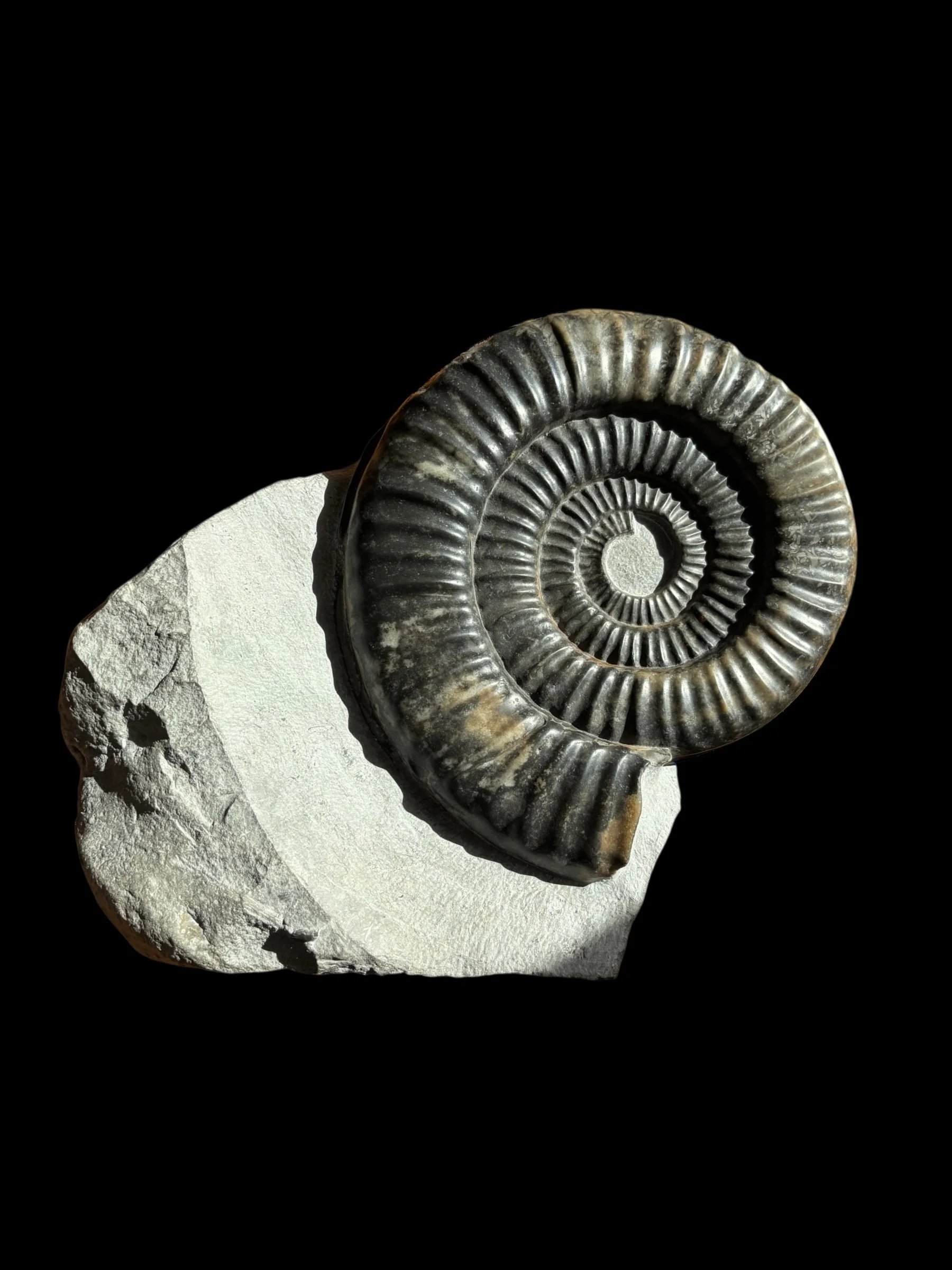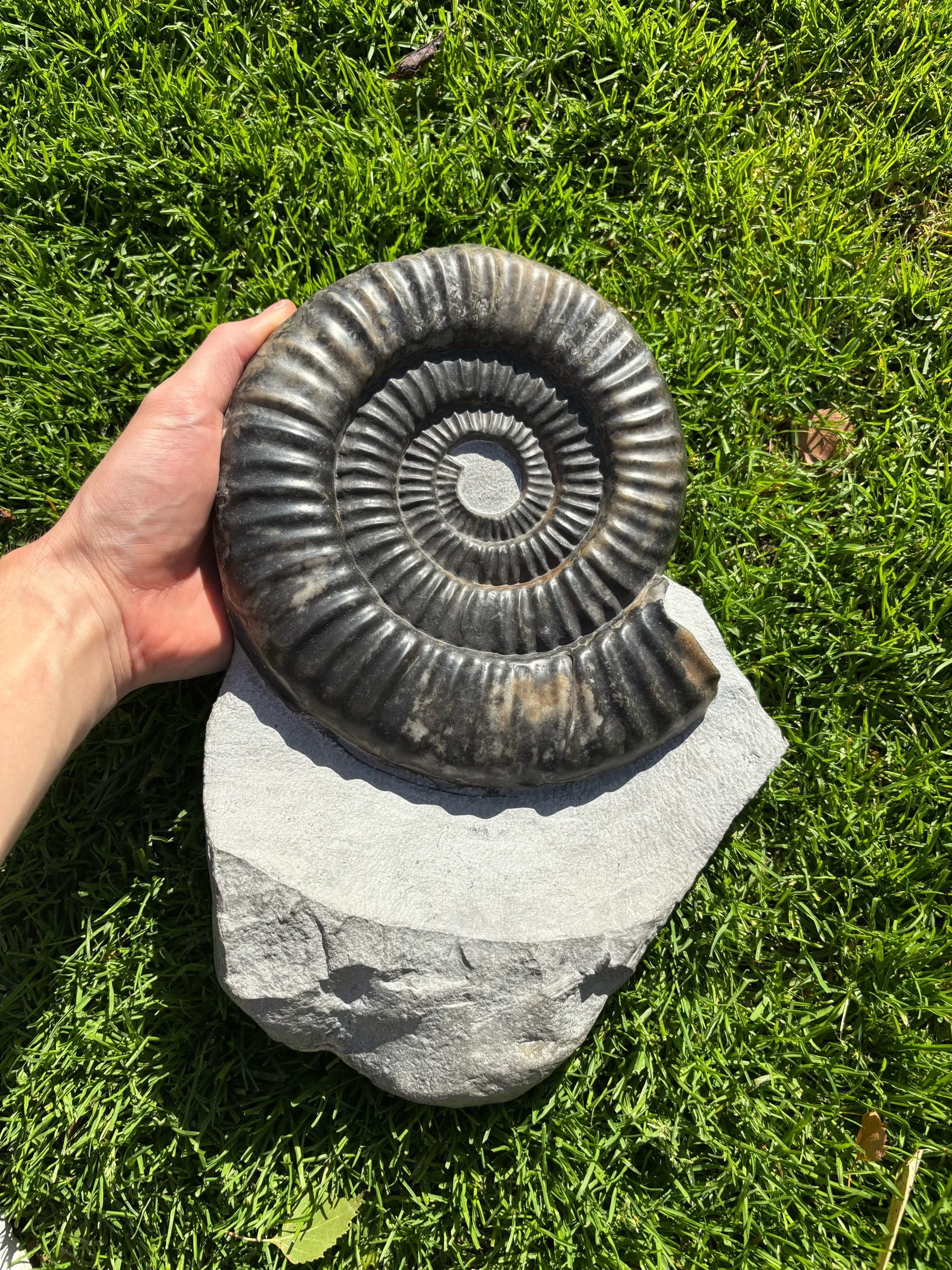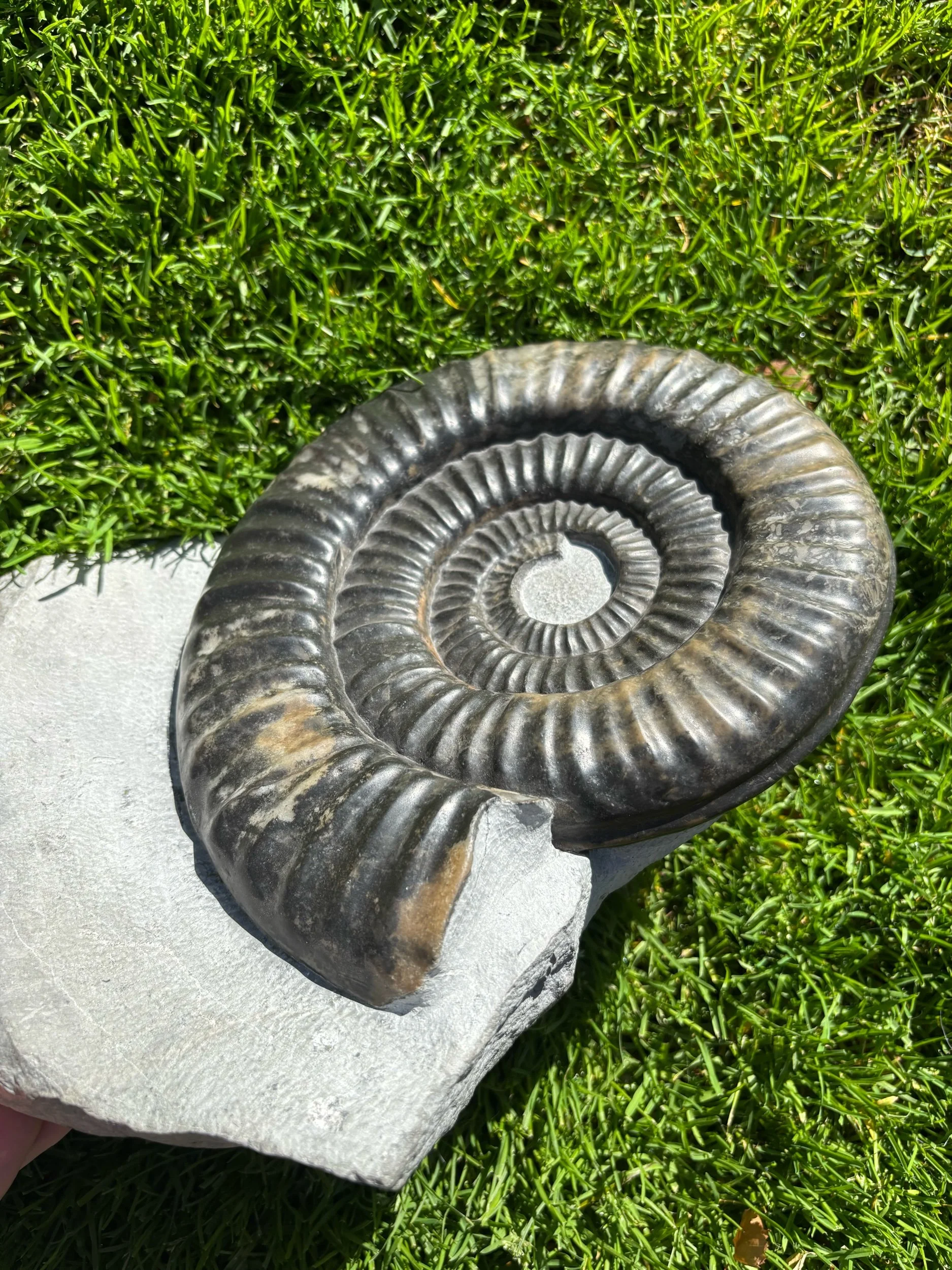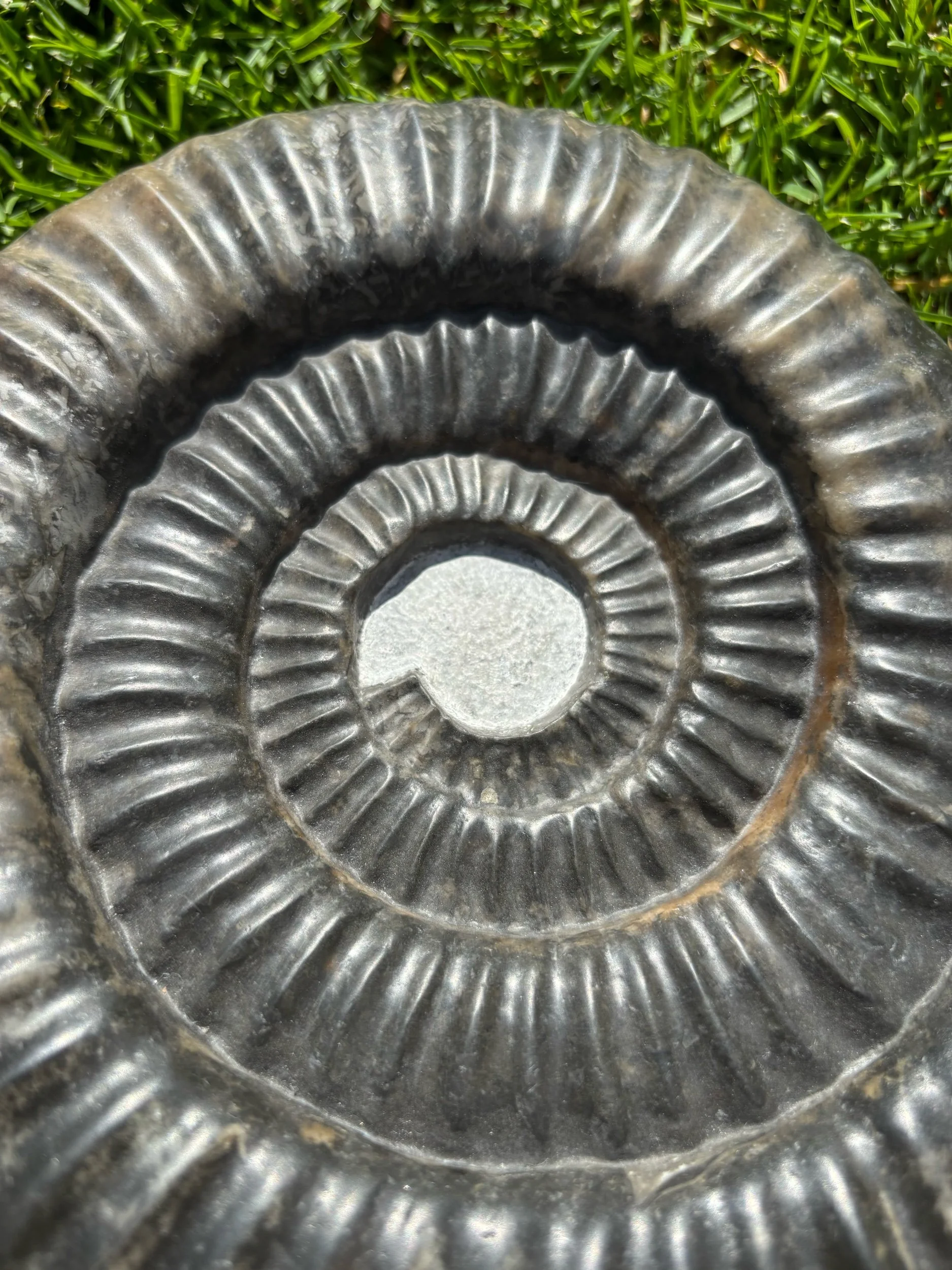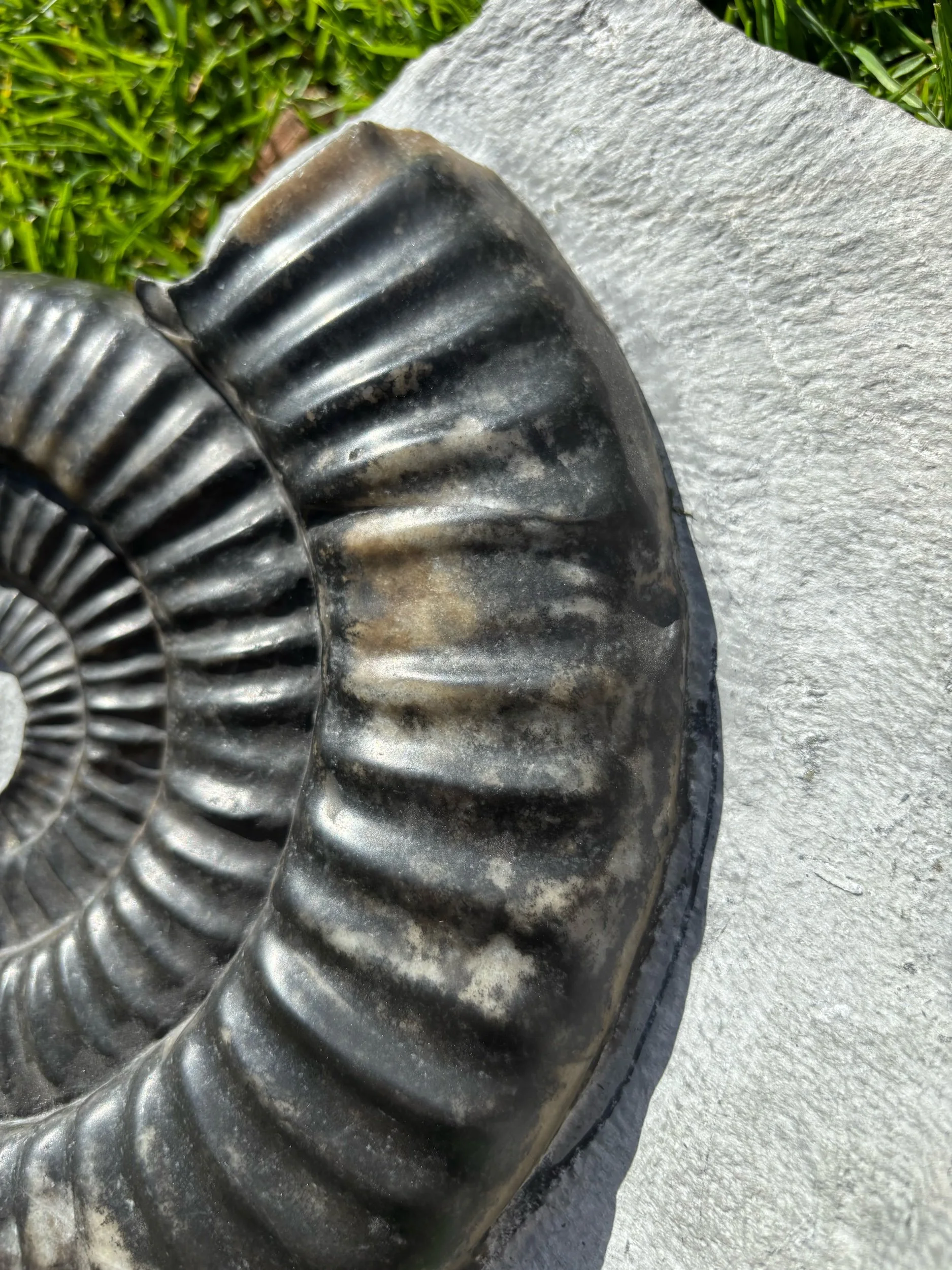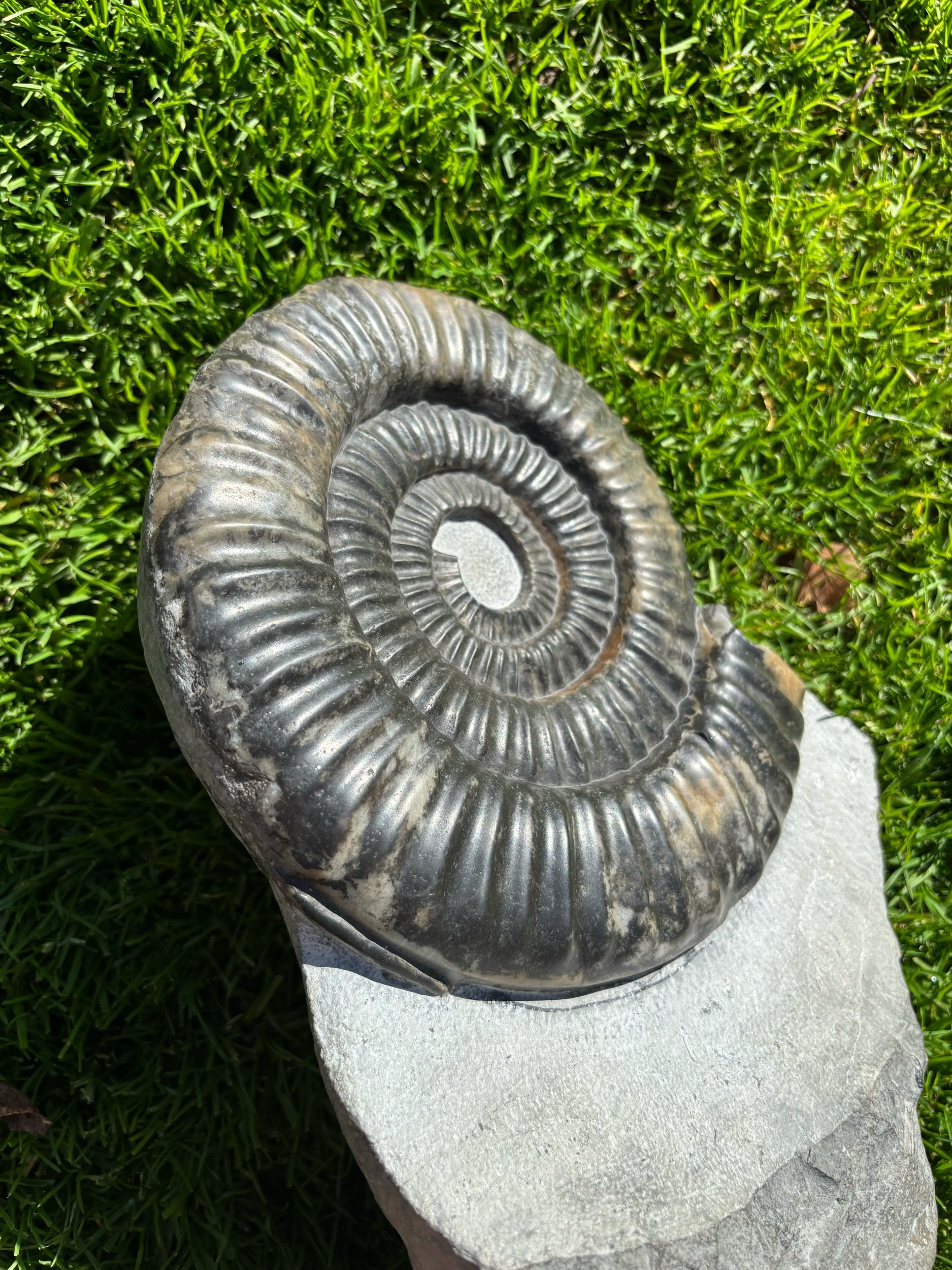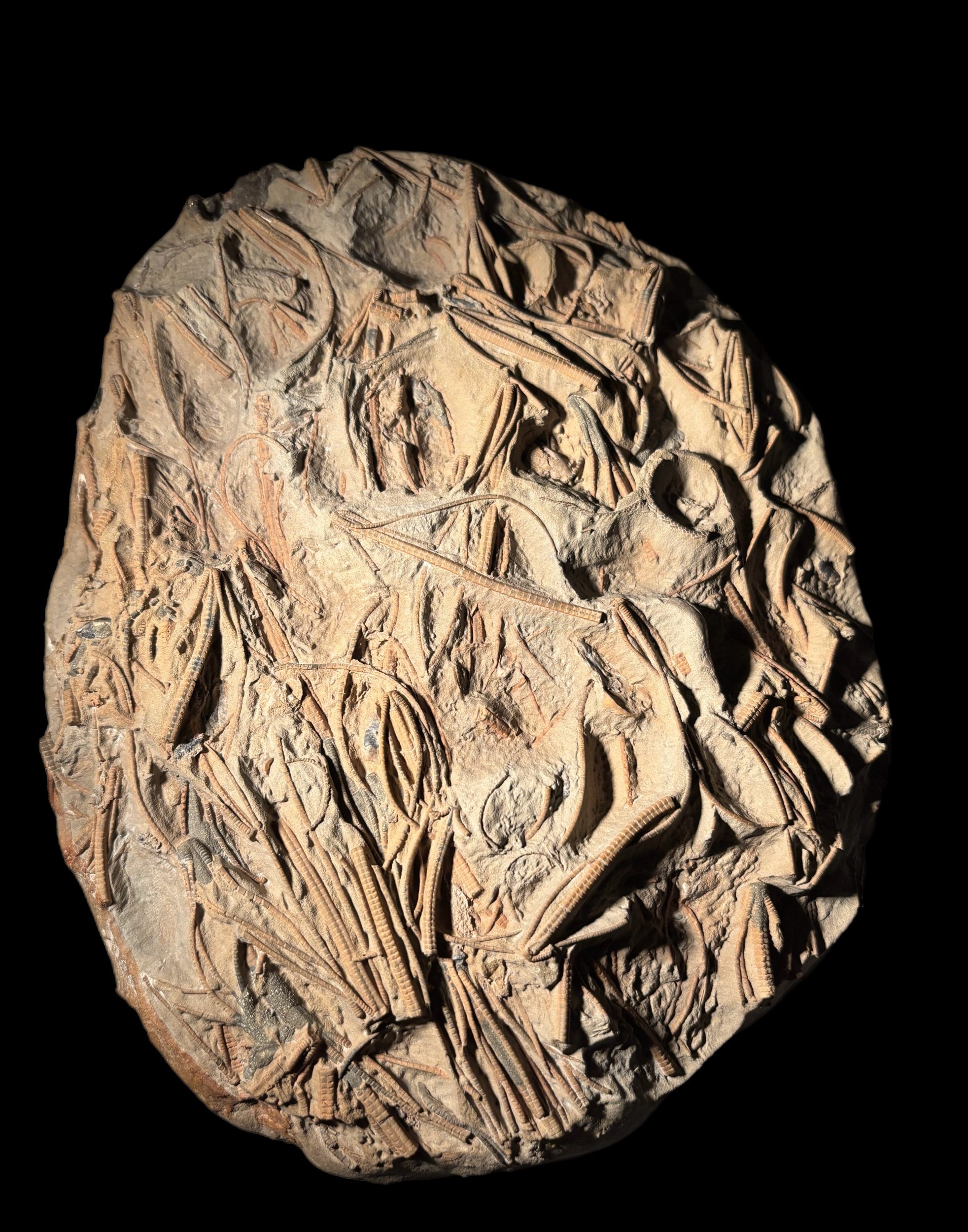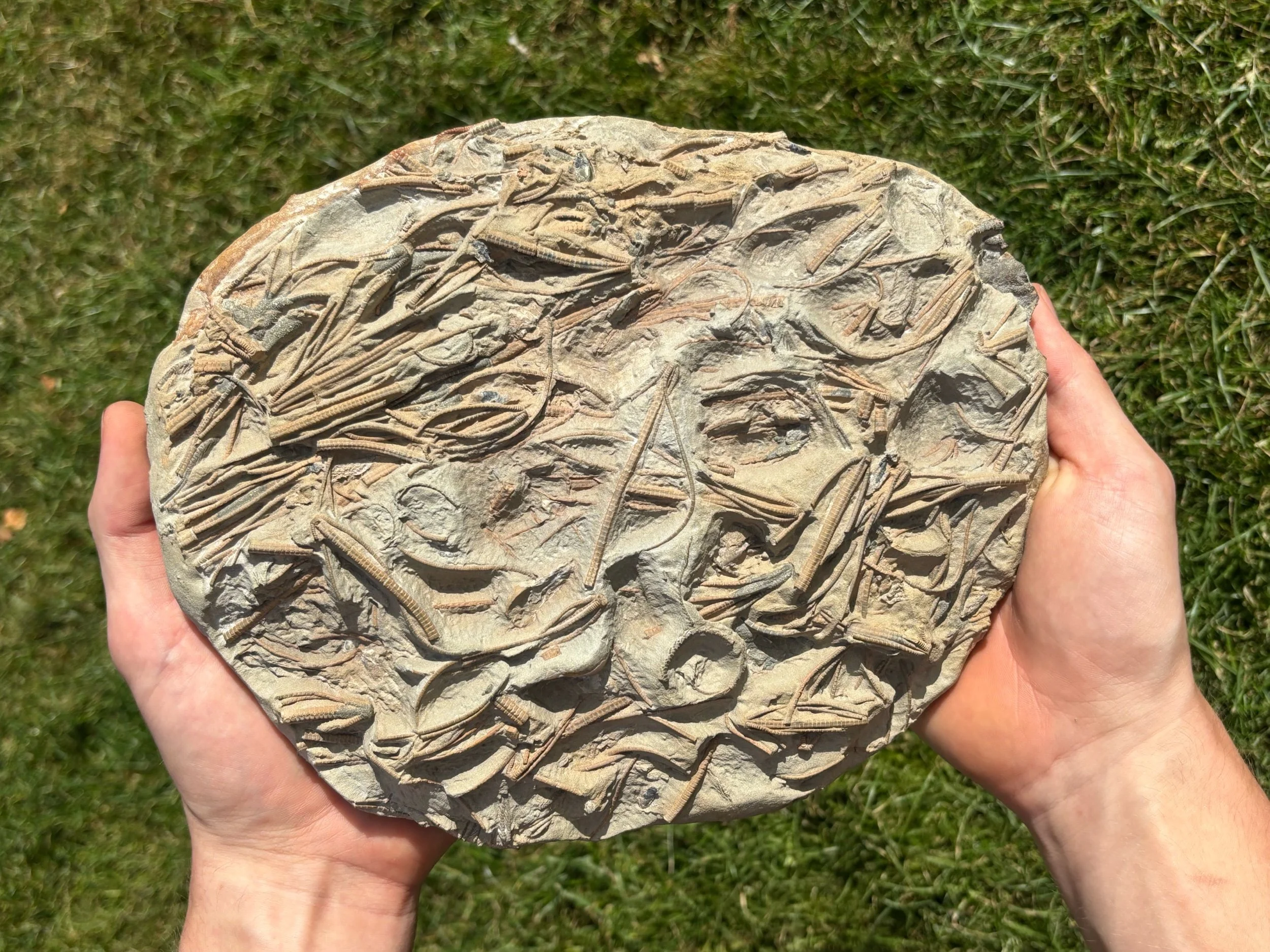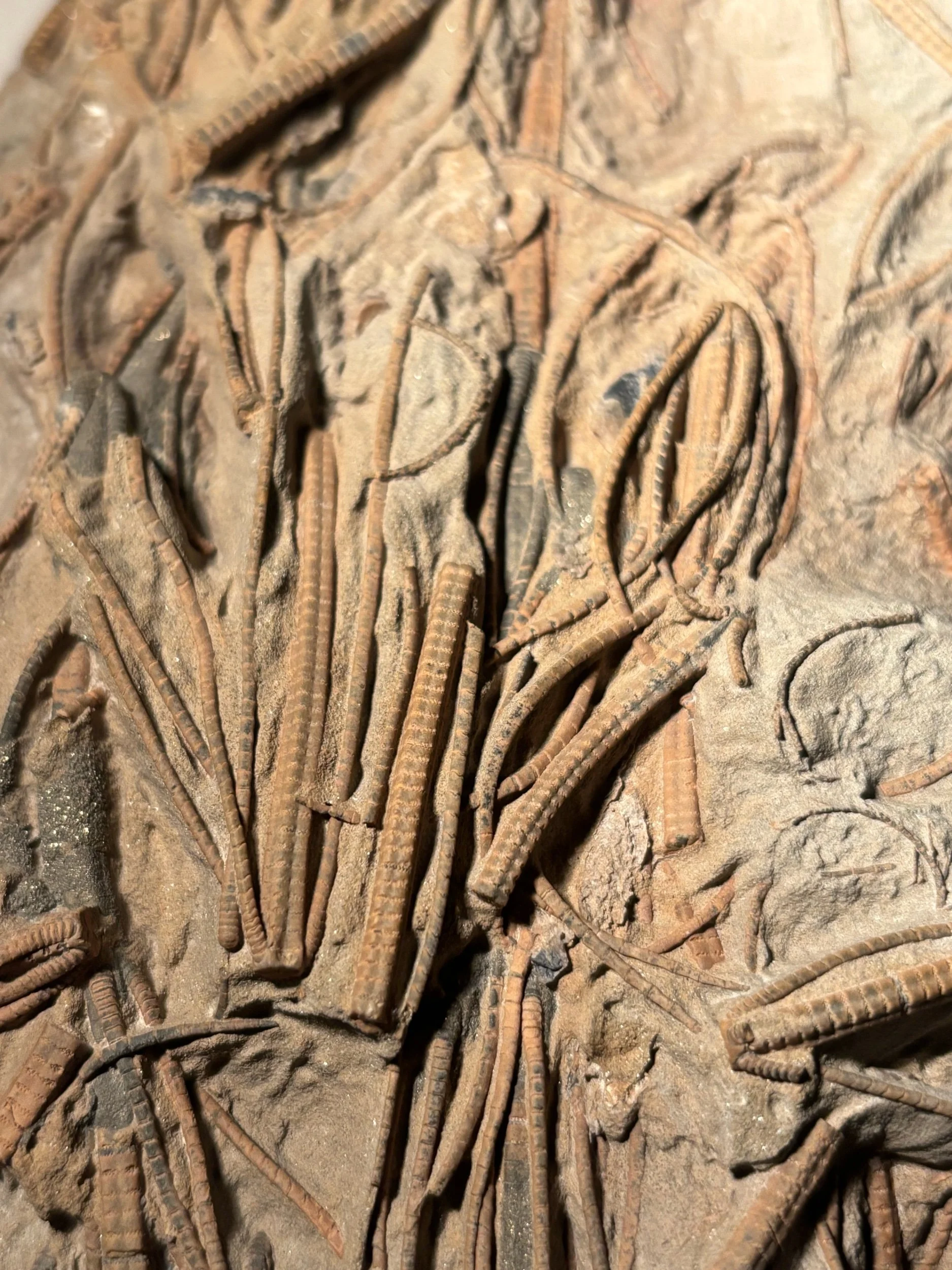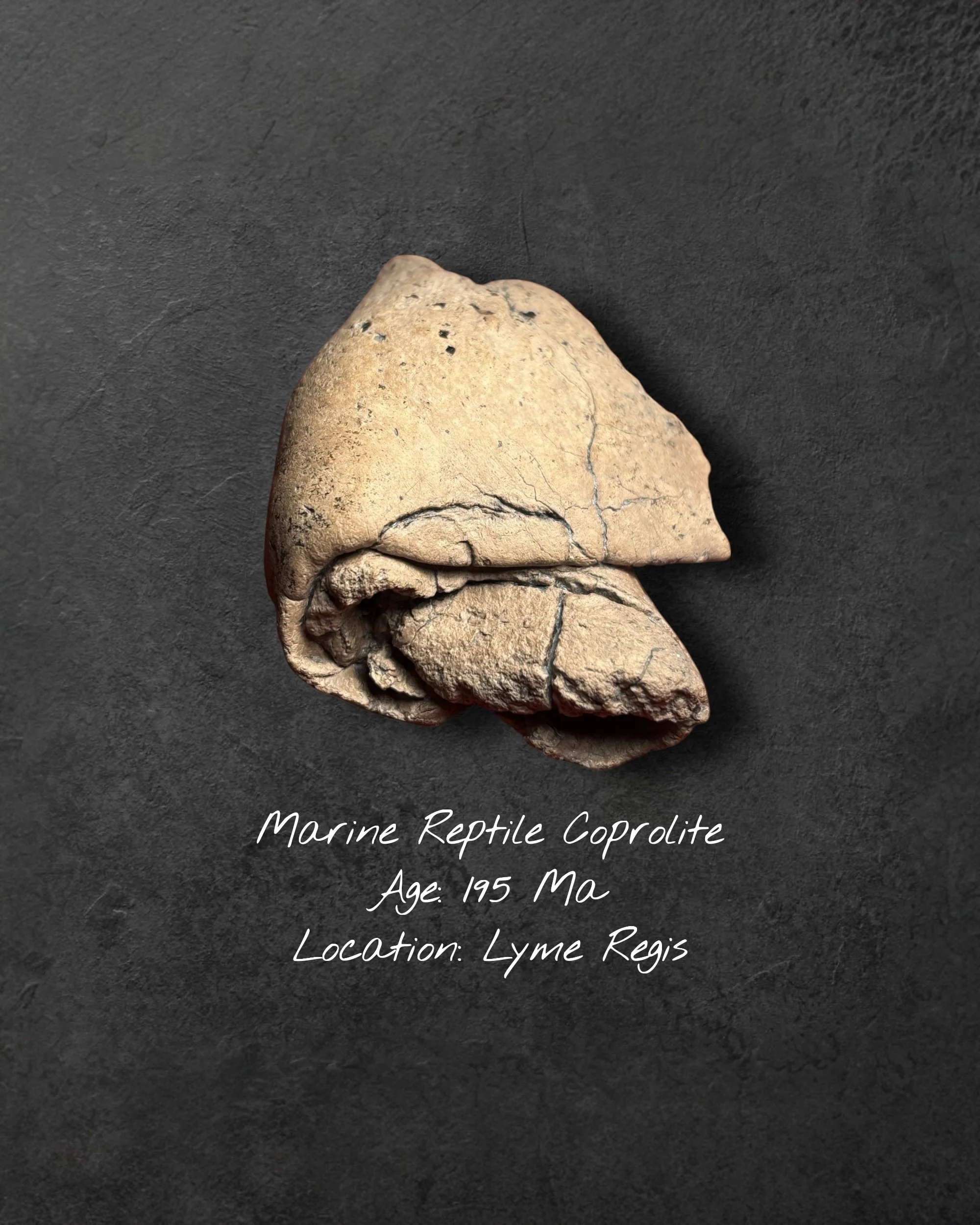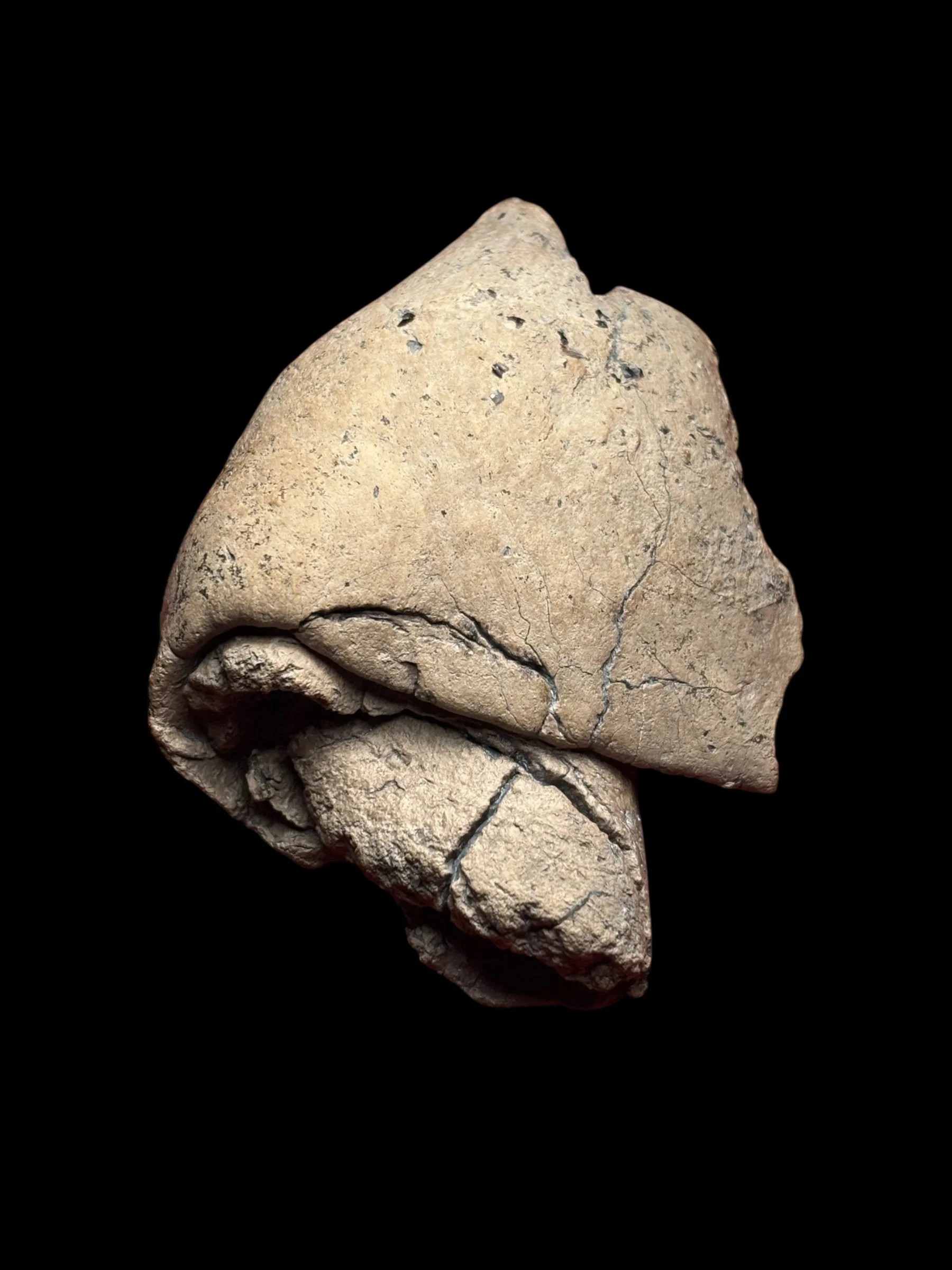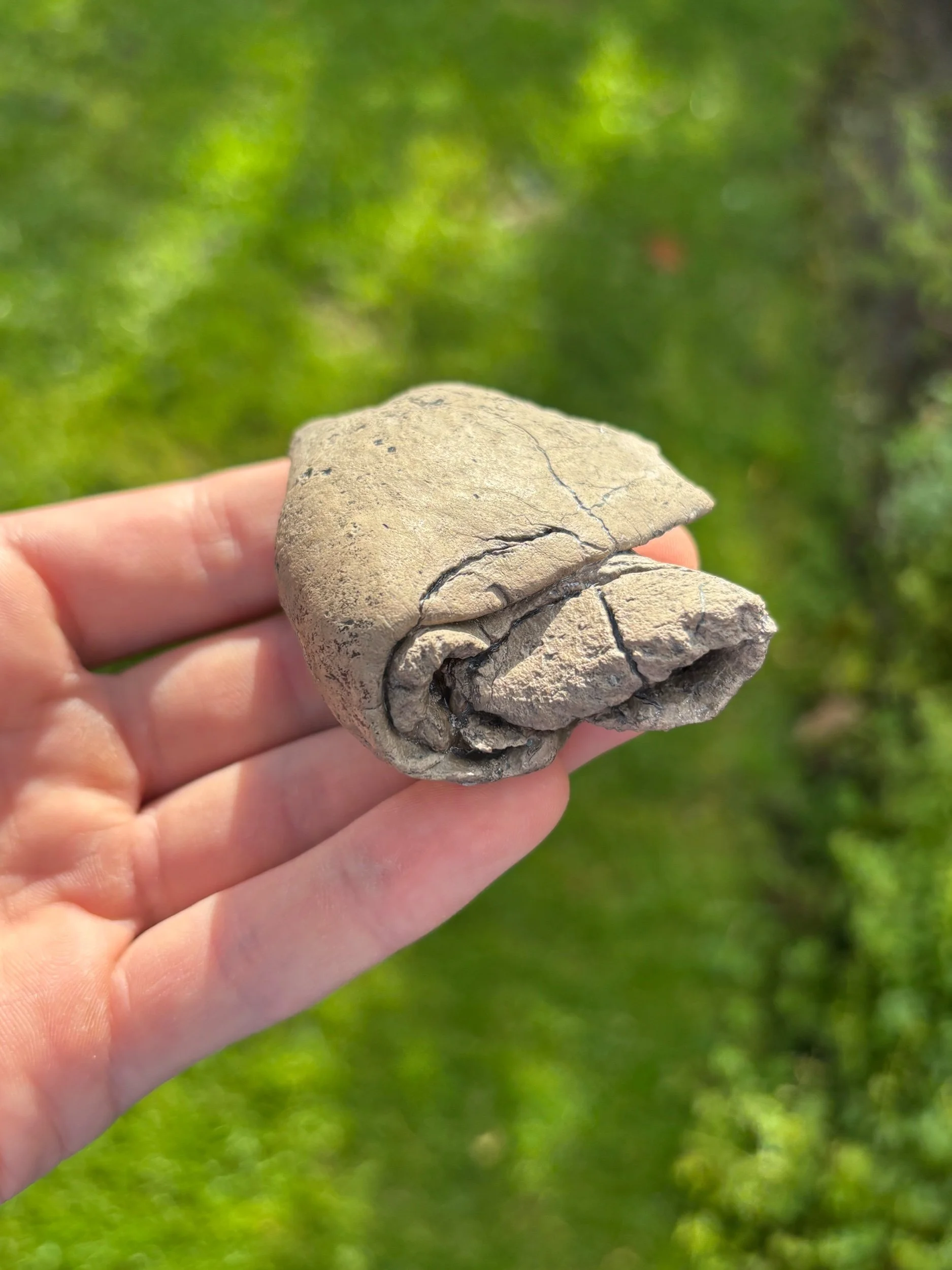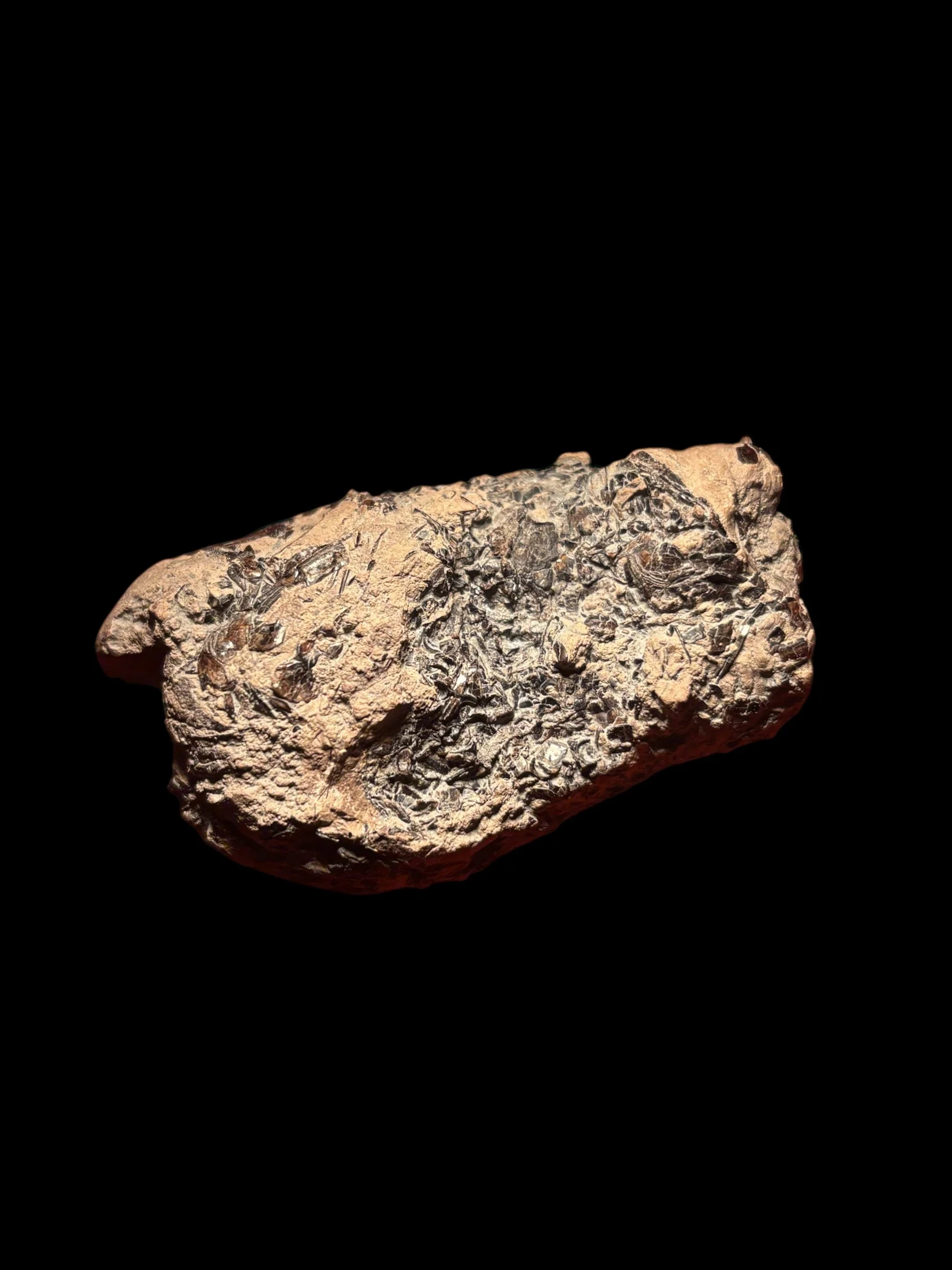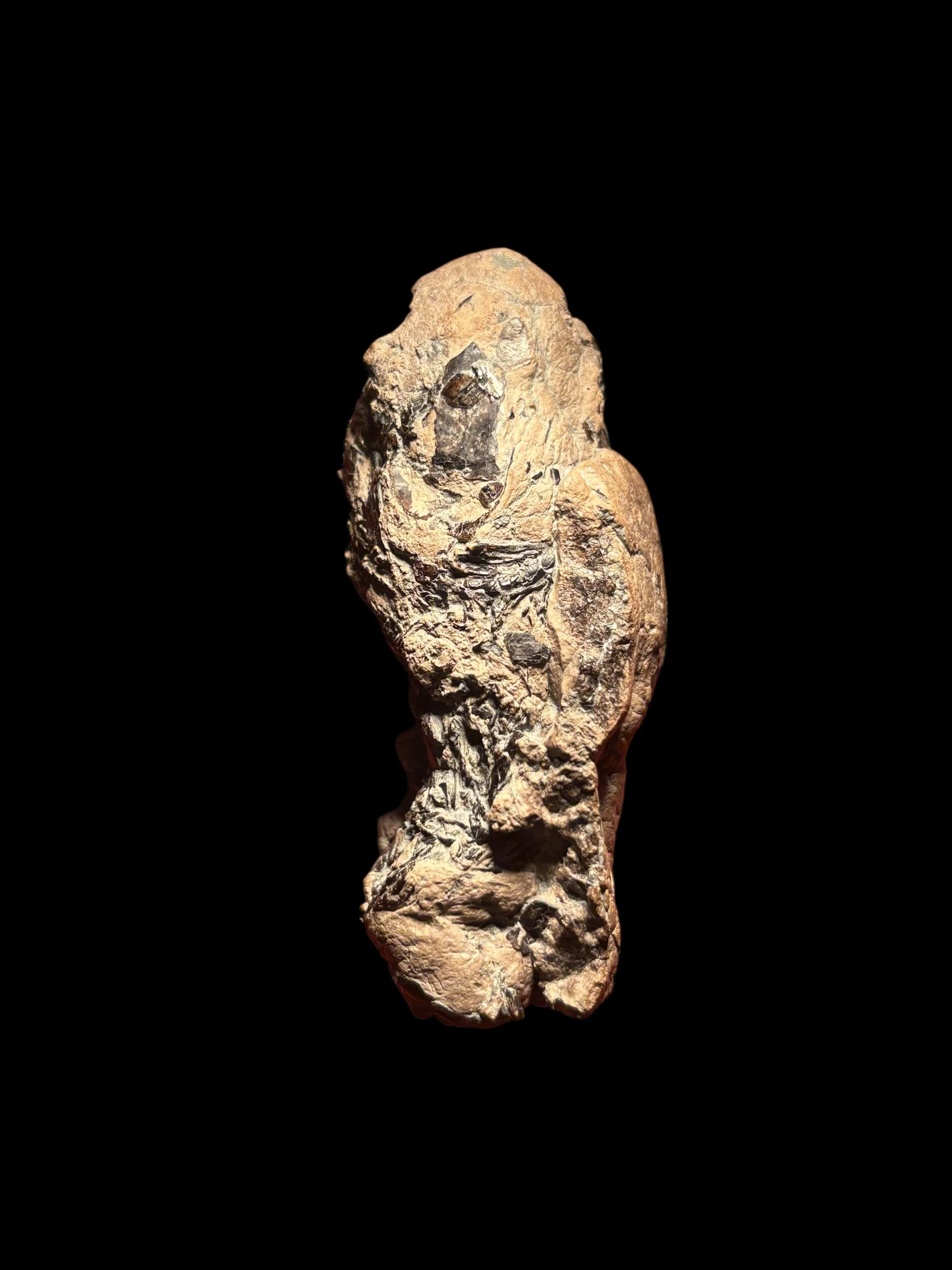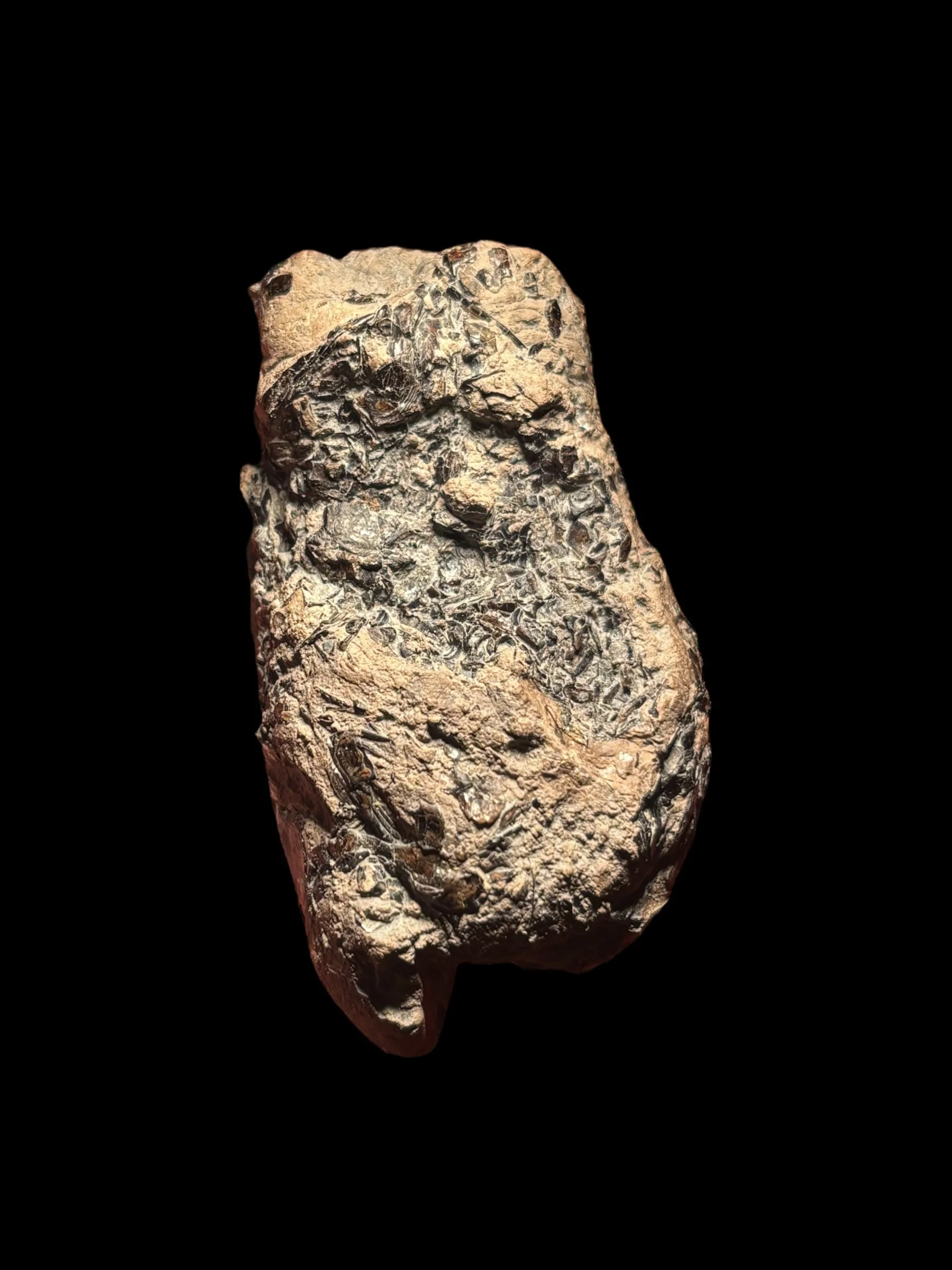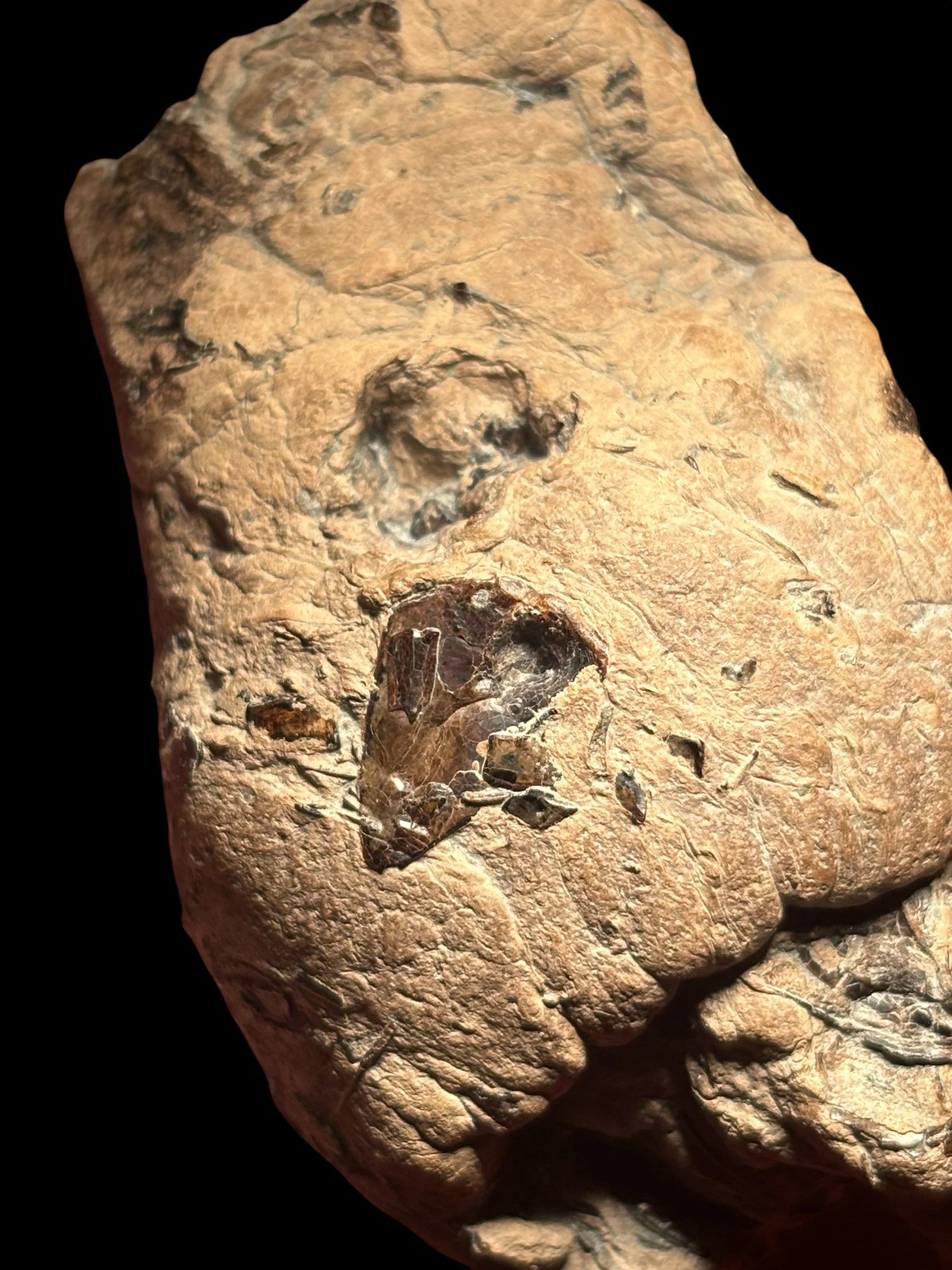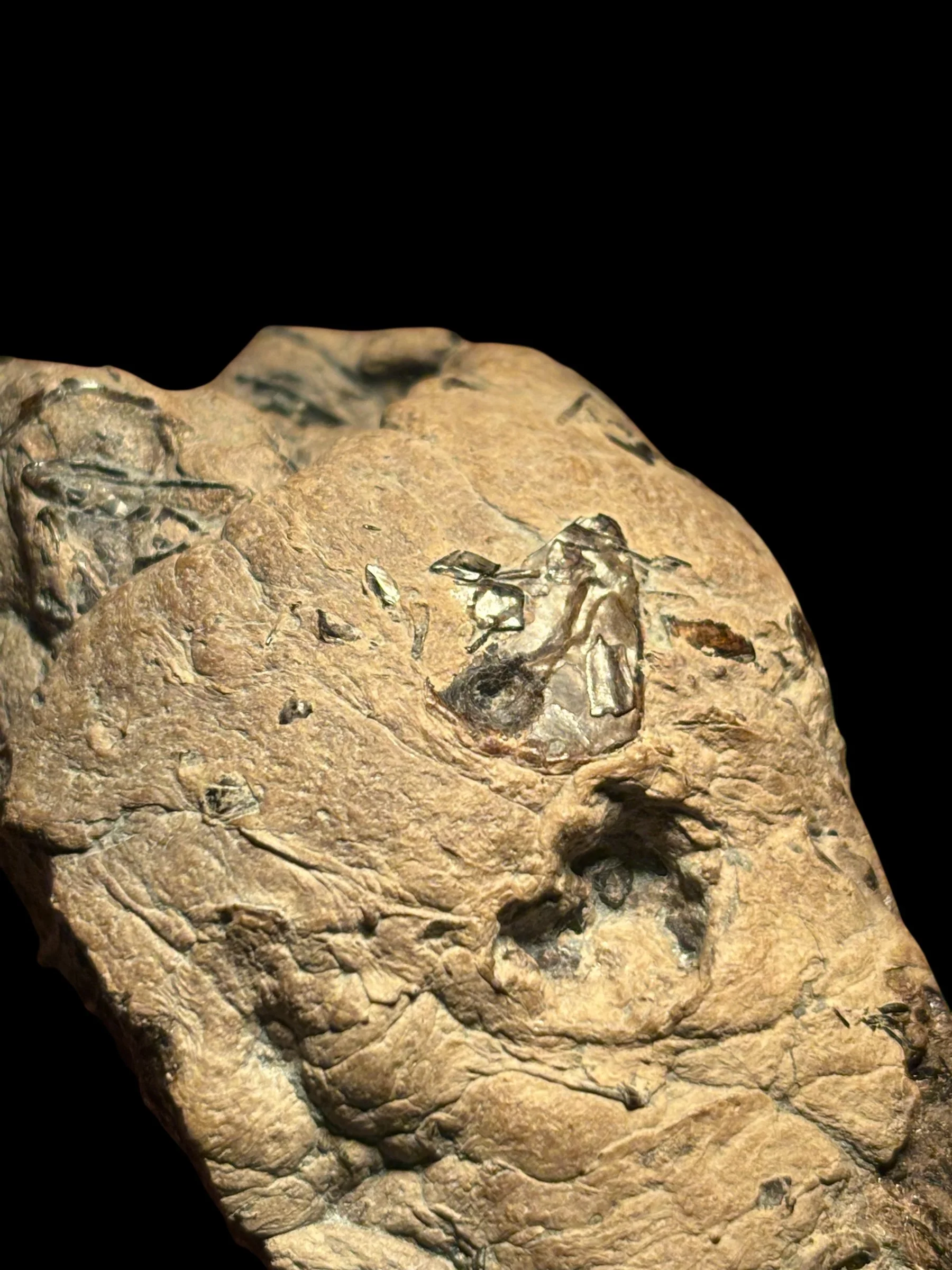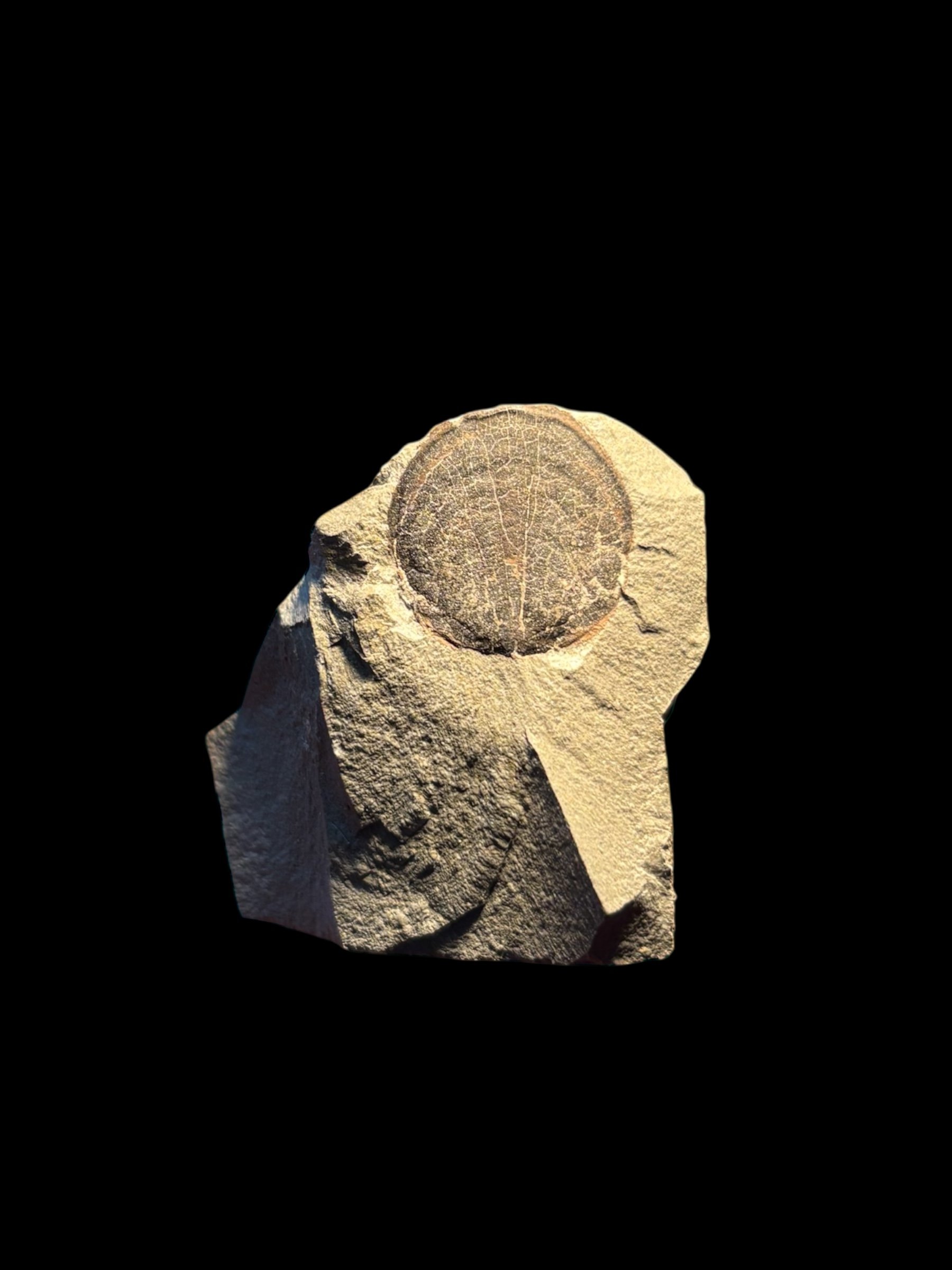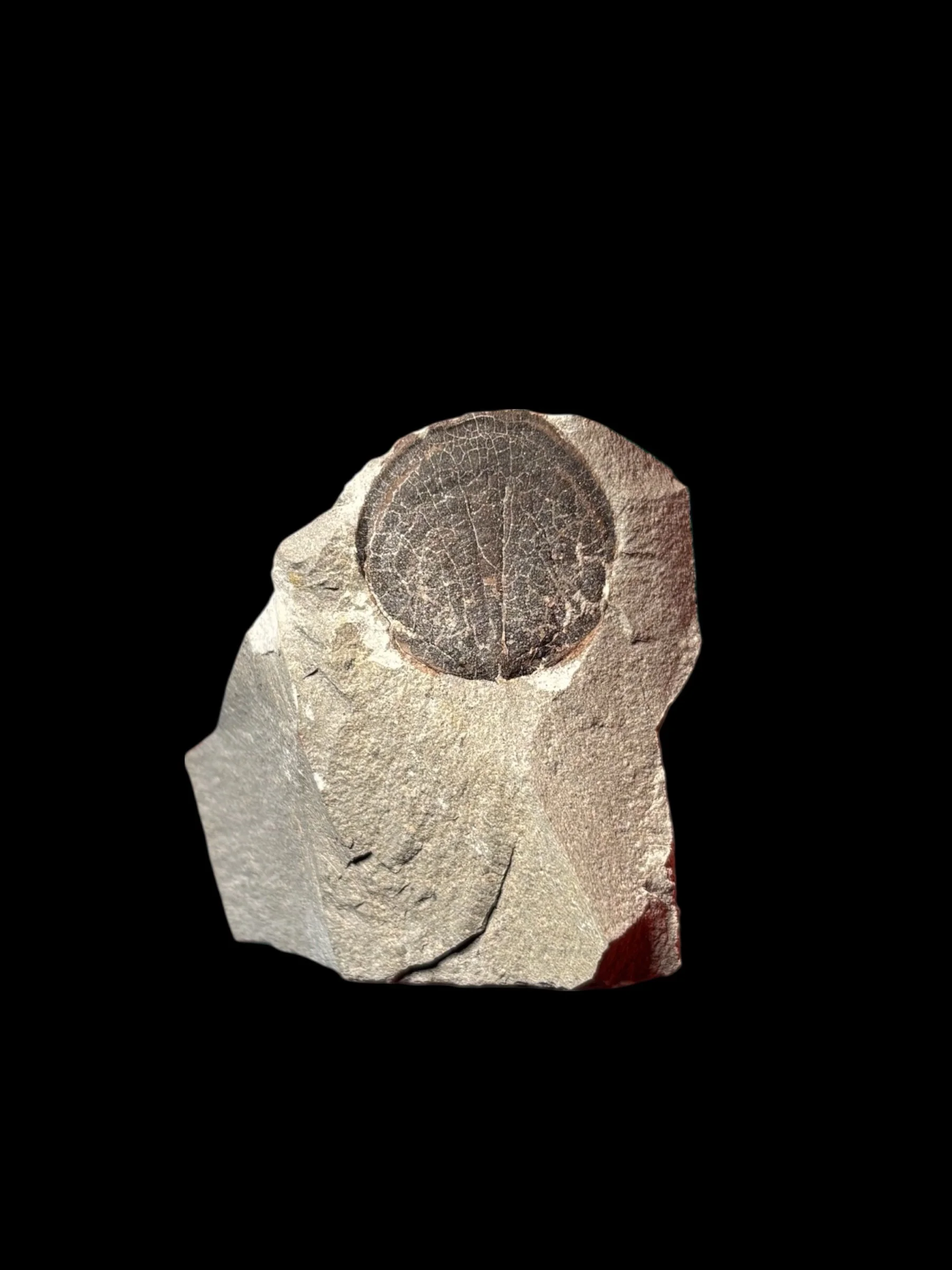
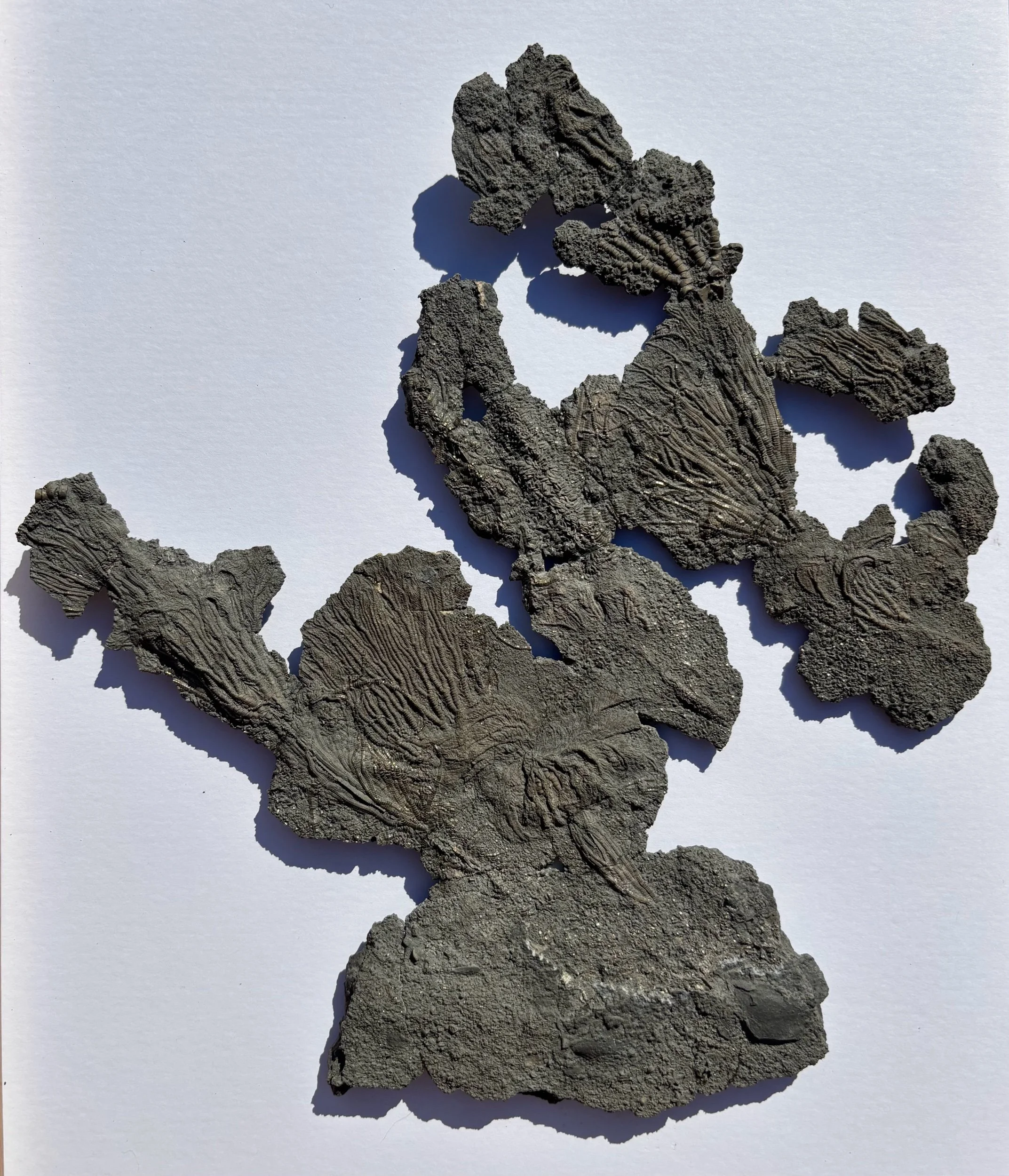
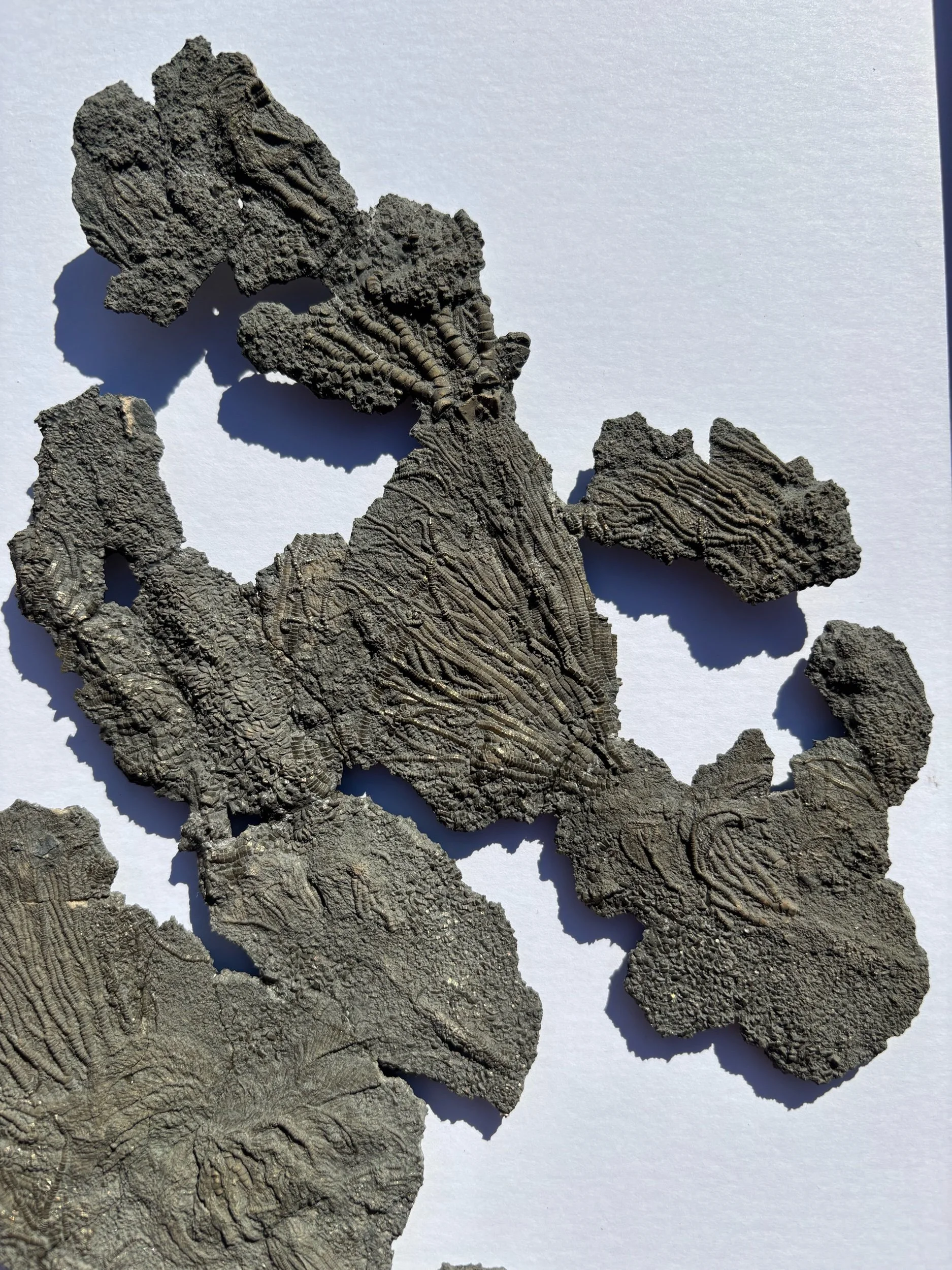
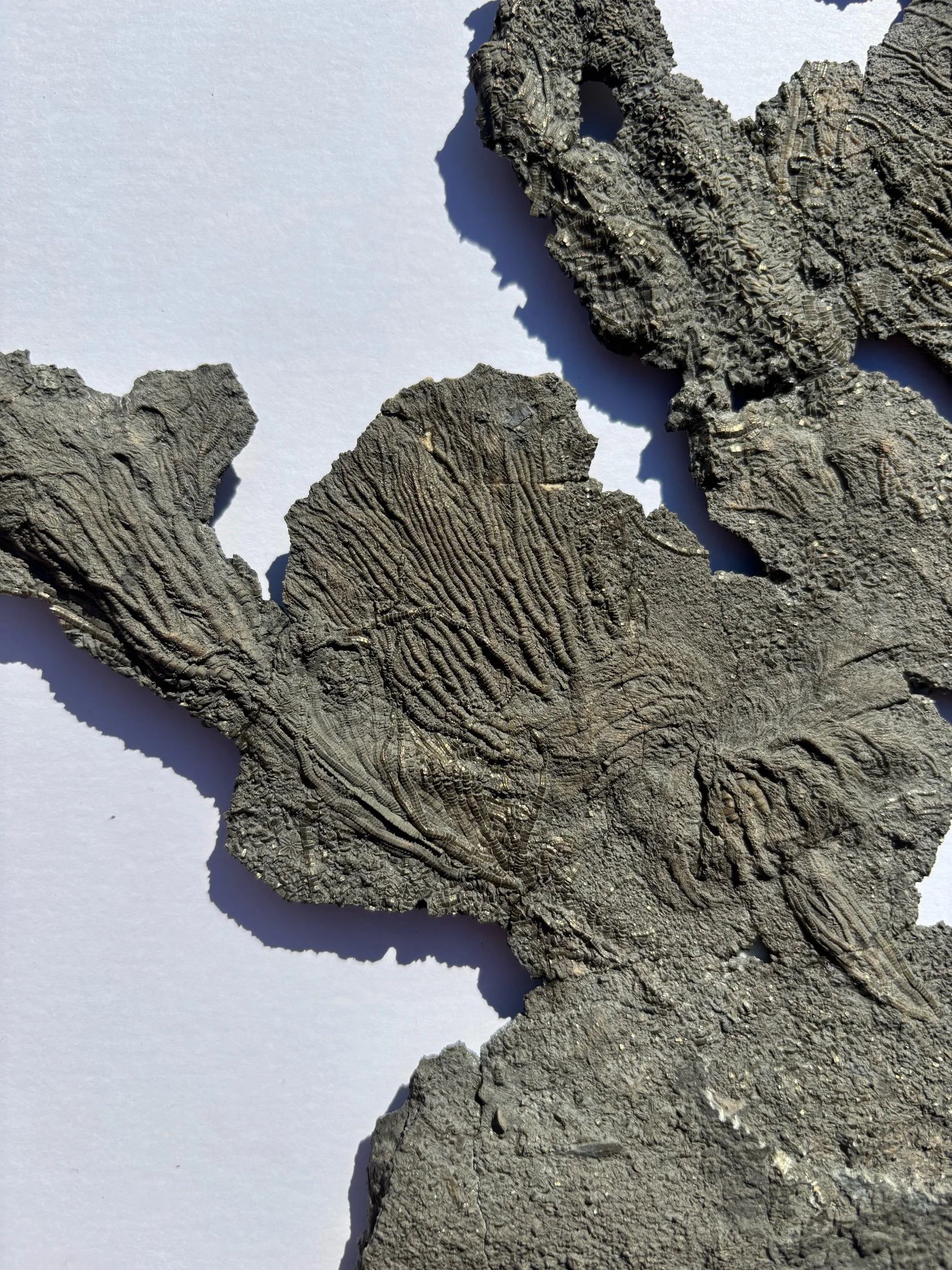
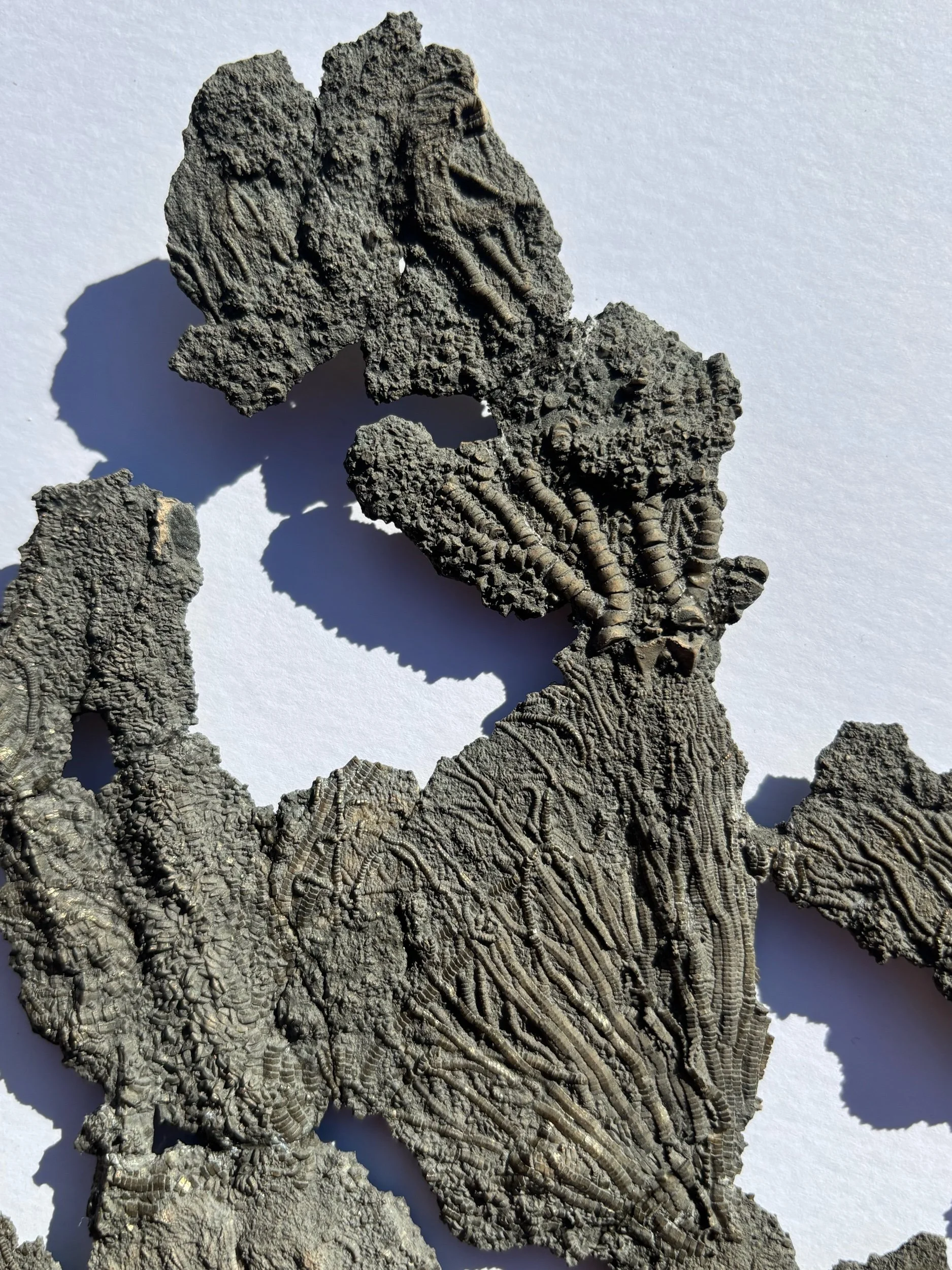
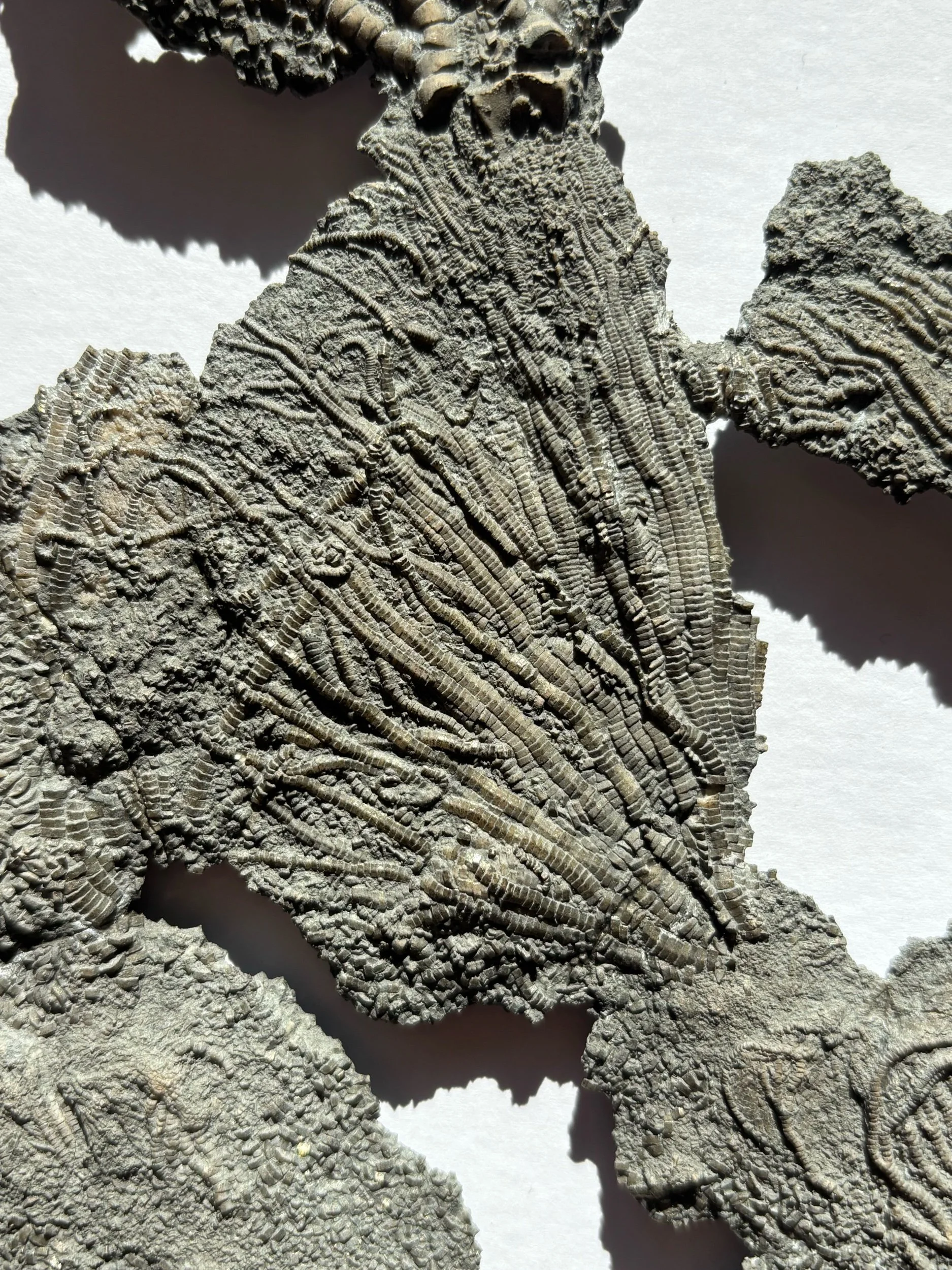
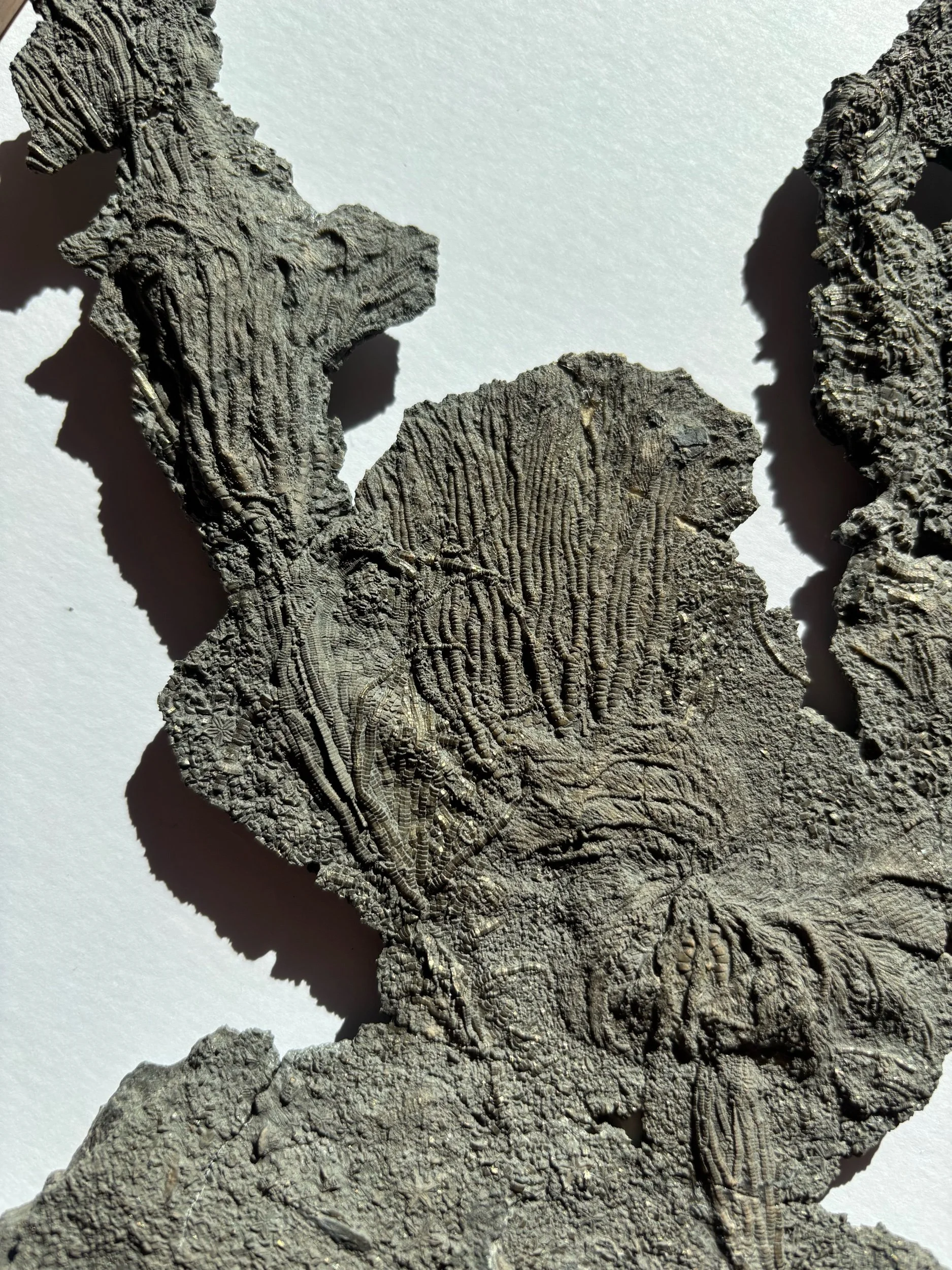


Crinoid Lens (Pentacrinites)
This crinoid fossil was found on the beach at Charmouth on the Jurassic Coast of Dorset in 2025, and displays some stunning detail with several complete crinoid heads. Pieces like this are rare on the coastline and are sought after by collectors. This piece took many hours to prepare and has been painstakingly put back together and mounted on a frame for display. The fossil is preserved in calcite but has a thin layer of pyrite on top which gives it a shiny, metallic appearance. At the bottom of the piece, part of the driftwood that the crinoids grew off is still preserved.
Crinoids would attach themselves to pieces of floating driftwood when juveniles, and would grow off the driftwood throughout their lives, hanging down into the water and filter feeding. When the driftwood became too heavy and was no longer buoyant, it would take the crinoid colony down with it to the seafloor, where the colony would sadly die and become fossilised.
Some species of crinoids are still alive today, although are rare in the modern-day oceans. Although they look relatively plant-like, crinoids are actually animals and are part of the echinoderm phylum, and are related to starfish, sea urchins and brittle stars.
Best displayed in direct sunlight or with a light to highlight the intricate details. Frame included with fossil.
*Very fragile fossil - Collection in person only (please contact us at point of purchase).
Approximately 195 million years old.
Fossil dimensions: 29 x 26cm
Frame dimensions: 40x 30cm
This crinoid fossil was found on the beach at Charmouth on the Jurassic Coast of Dorset in 2025, and displays some stunning detail with several complete crinoid heads. Pieces like this are rare on the coastline and are sought after by collectors. This piece took many hours to prepare and has been painstakingly put back together and mounted on a frame for display. The fossil is preserved in calcite but has a thin layer of pyrite on top which gives it a shiny, metallic appearance. At the bottom of the piece, part of the driftwood that the crinoids grew off is still preserved.
Crinoids would attach themselves to pieces of floating driftwood when juveniles, and would grow off the driftwood throughout their lives, hanging down into the water and filter feeding. When the driftwood became too heavy and was no longer buoyant, it would take the crinoid colony down with it to the seafloor, where the colony would sadly die and become fossilised.
Some species of crinoids are still alive today, although are rare in the modern-day oceans. Although they look relatively plant-like, crinoids are actually animals and are part of the echinoderm phylum, and are related to starfish, sea urchins and brittle stars.
Best displayed in direct sunlight or with a light to highlight the intricate details. Frame included with fossil.
*Very fragile fossil - Collection in person only (please contact us at point of purchase).
Approximately 195 million years old.
Fossil dimensions: 29 x 26cm
Frame dimensions: 40x 30cm
